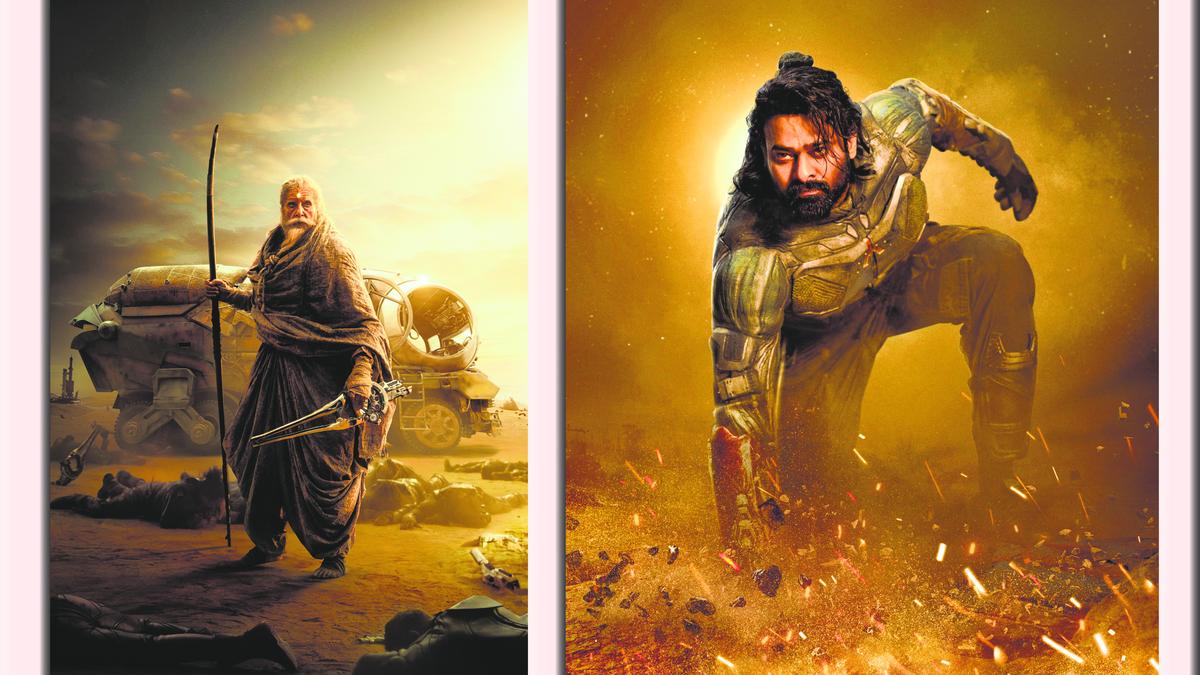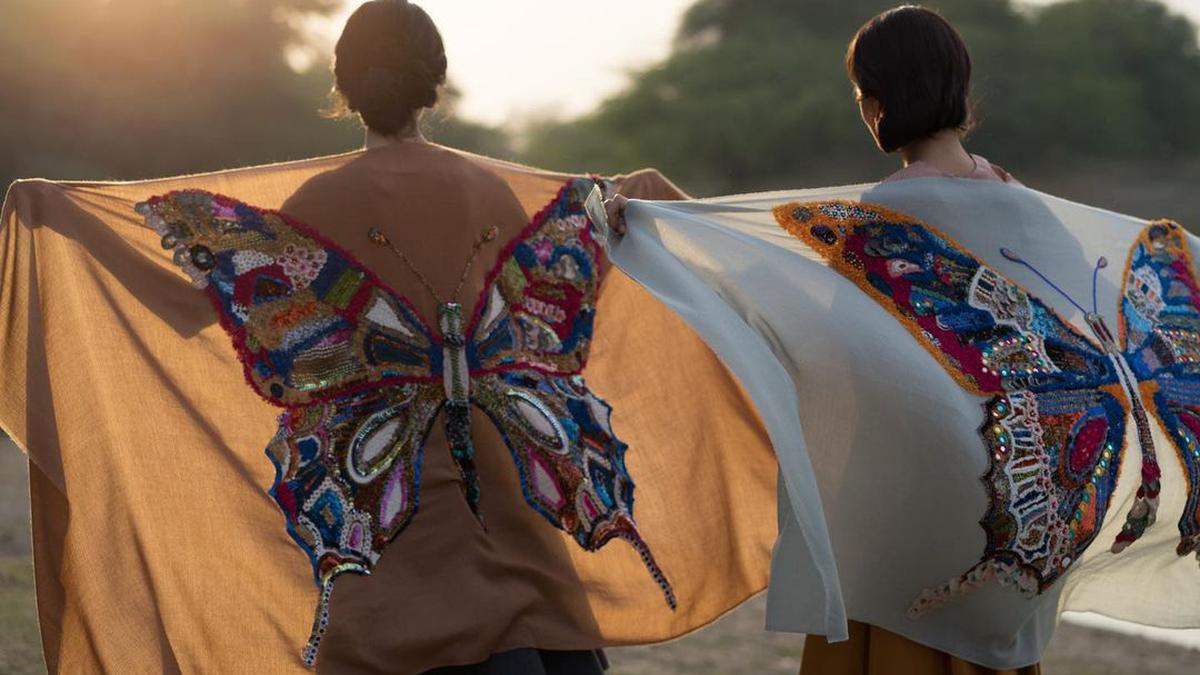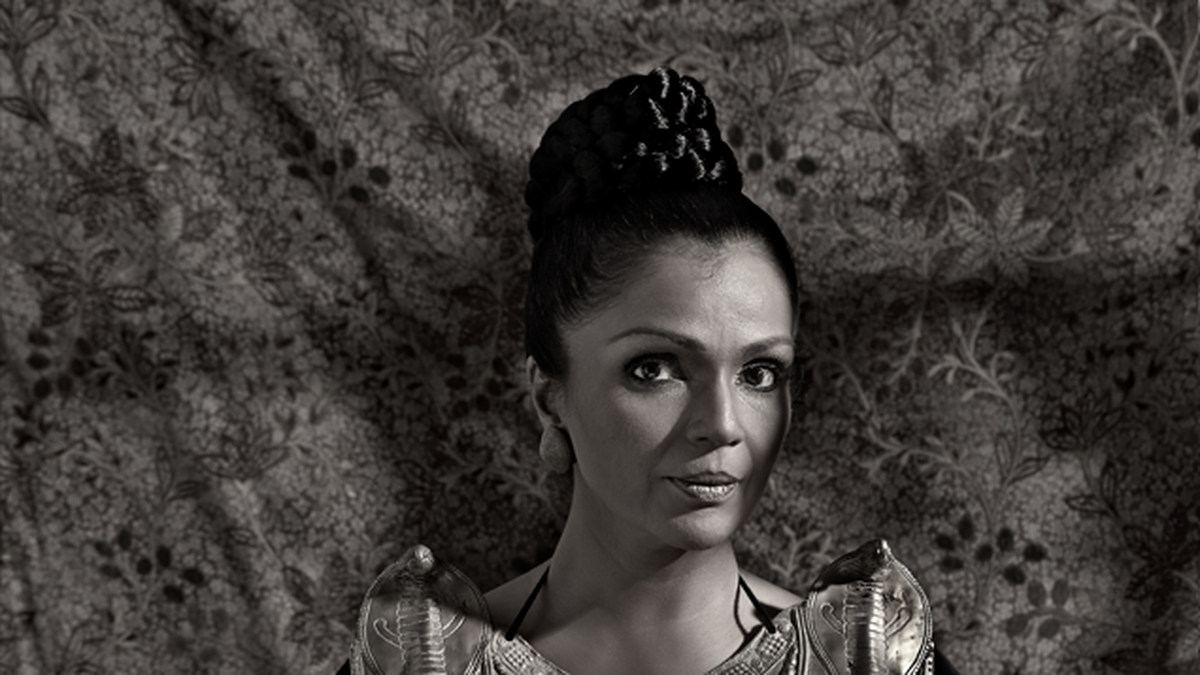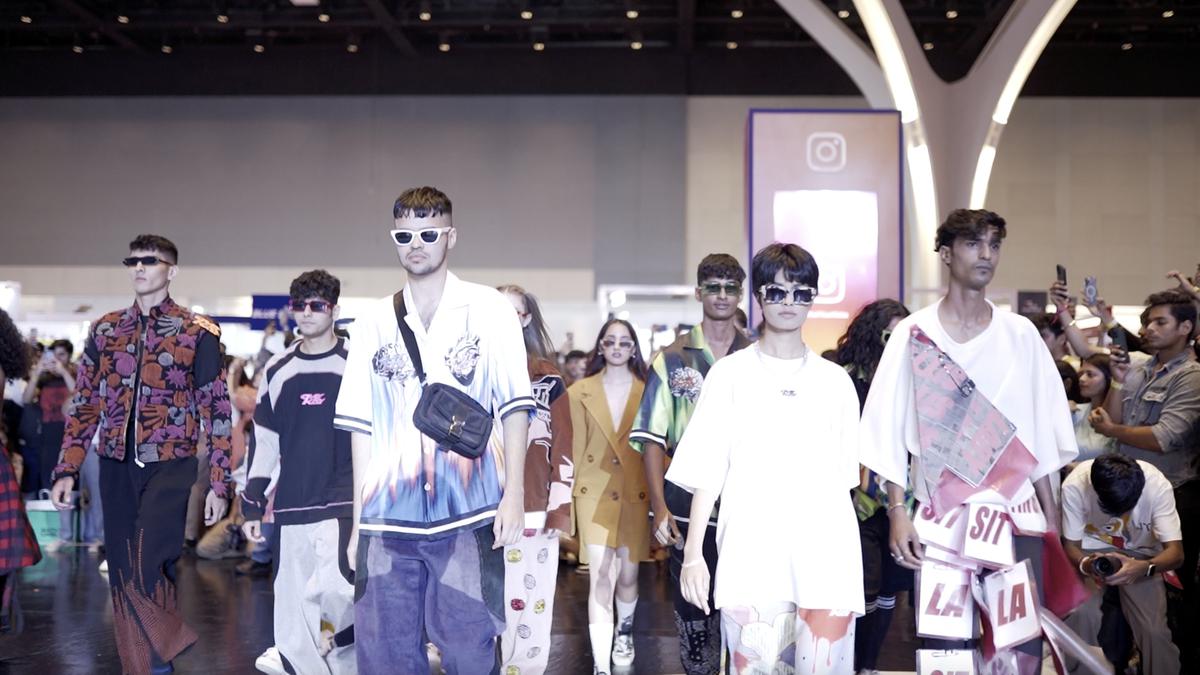Imagine the possibility of designing the look of a character that is supposedly the oldest man alive. When director Nag Ashwin first narrated the story of Kalki 2898 AD, nearly four years ago to Hyderabad-based fashion designer Archana Rao, she was fascinated by Ashwatthama, the character inspired by Mahabharata, played by Amitabh Bachchan. She began imagining him in 2898 AD, in a science fiction setting. Archana, who had collaborated with Nag Ashwin for Mahanati and the short film xLife from the Netflix Telugu anthology Pitta Kathalu, was game for the creative challenges ahead.
Speaking from the USA, where she is currently travelling, Archana, a name to reckon with in Indian fashion, discloses that Kalki 2898 AD is the first film for which she designed costumes for the entire cast. For Mahanati, Gaurang Shah designed Keerthy Suresh’s costumes while she did the honours for Dulquer Salmaan, Vijay Deverakonda and Samantha Ruth Prabhu, and a few others.
From Savitri biopic to science fiction
In the initial stages of Kalki, the only condition Nag Ashwin had was that Archana oversee the costume design for the entire film. “It proved to be challenging and a huge shift in my career. Coming from a fashion designer background, I was pleasantly surprised by how naturally I took to costume designing during Mahanati.” Archana and Gaurang winning the National Award for Best Costume Design for that film was a recognition of the work that went into it.
Designer Archana Rao
| Photo Credit:
Special Arrangement
Kalki warranted a new approach. “I have not been exposed to many science fiction movies. I knew it would be tough but I was also aware that I would have a fresh perspective. I decided to dive right in.”
She stepped in knowing that it would be an ambitious project. “We planned one segment, one character, one task at a time so that it does not become intimidating. For all of us — the direction team, costume design, production design, cinematography — it was like working on several small projects within one big project.”
The sub worlds
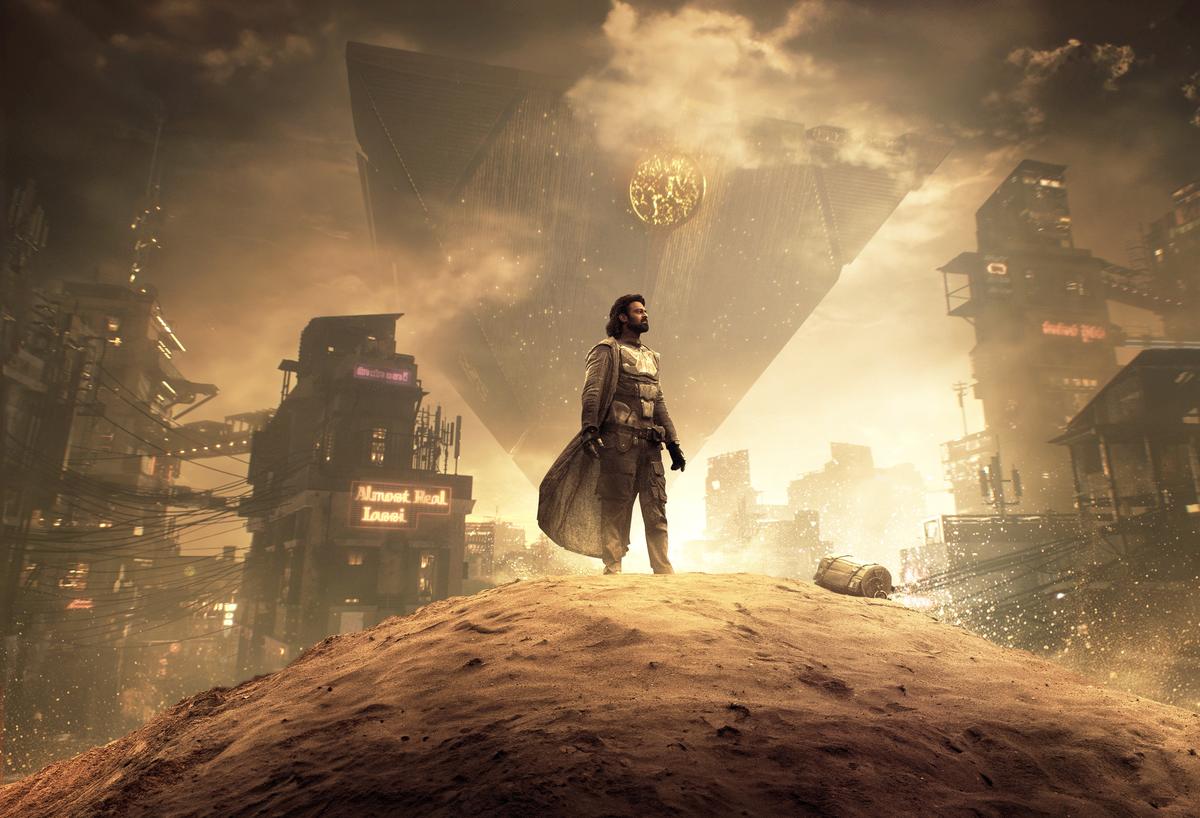
Prabhas as Bhairava in ‘Kalki 2898 AD’
| Photo Credit:
Special Arrangement
In a promotional video, Nag Ashwin explains that the story navigates three settings — Kasi becomes the last city in which it is a matter of survival of the fittest, an inverted pyramid city named the Complex that contains essential resources such as food and water, and Shambala that has become a refuge.
Each of these worlds, says Archana, required a particular design approach. “We would bounce ideas off each other,” she says, recalling the planning stages during which Nag Ashwin, producers Priyanka and Swapna Dutt, the cinematography department led by Djordje Stojiljkovic and production design led by Nitin Zihani Choudhary would brainstorm.
She explains with the example of Kasi where people survive with the bare minimum. “We had to think what materials would be available and what would they wear if it was the last surviving city. We thought of discarded materials such as metals, plastics, rubber and other synthetics… Their costumes had to be a collage of things. We had to distress the costumes to make them look aged (worn out) but with an Indian ethos. For that aged look, we worked closely with the art department.” The colour palette was decided in coordination with the cinematography and art departments. “We made plenty of prototypes and did look tests. The costumes and accessories had to be functional to allow movement.”
On set, Archana says there was zero hierarchy. Everyone would get their hands dirty to finish the work. “For a film of this scale, we all worked with compact teams,” says Archana. The costume department comprised five people who designed 100s, sometimes even more than a thousand, costumes. “It seemed daunting at first, but it was also easy to coordinate since we knew what each one was doing.”

The ‘raiders’ or the army of the Complex needed costumes and armour that make them appear strong and intimidating. Curiously, the starting point for this was a mask inspired by the traditional ‘dishti bomma’ (a doll to ward off the evil eye). “The masks were our take on the dishti bomma,” says Archana. The suits of the raiders were made using rubber-coated neoprene fabric. “We experimented with poly oil and collaborated with the art department to sculpt the metallic armours. Though these costumes were monotone, we wanted light to bounce off the sculpted portions of the armour to create a tonal variation.”
A lot of trial and error was involved, Archana explains. “We kept refining the costumes of the raiders to make them durable for the action sequences.”
As old as a tree
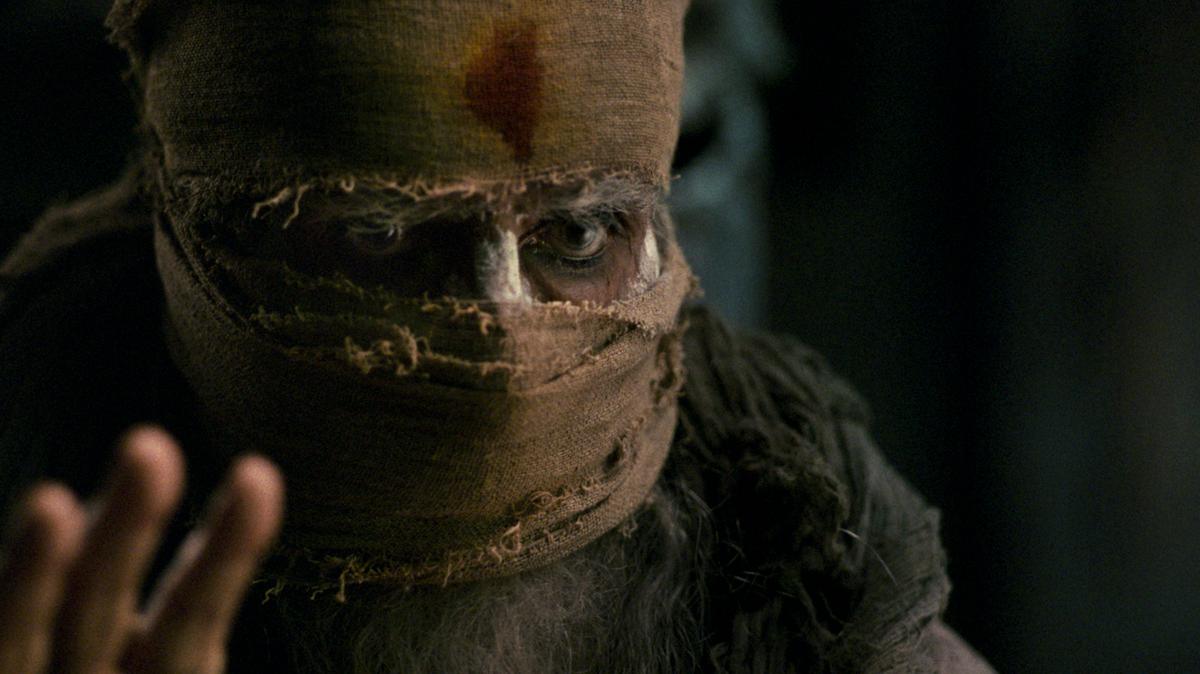
Amitabh Bachchan as Ashwatthama
| Photo Credit:
Special Arrangement
The first character Archana designed was for Ashwatthama. “Our main inspiration was to make him look as old as a tree.” Fine mul cotton was put through multiple dyeing processes. “We distressed the fabric to the extent that it looked sheer and the motif of the bark of a tree was printed on the fabric. The fabric itself had to look like it was hanging by its last thread.” The multiple bandages that wrap Ashwattama’s wounds had to look aged as though it was soaked in blood and turmeric.
Recalling the first look test with Amitabh Bachchan, Archana says, “The minute he tried on the costume, it looked brilliant.” Still in awe at having worked with the legendary actor, she adds, “He was easily the most hard working actor on set.”

Those who have watched the animated prequel Bhairava and Bujji on Amazon Prime Video would be aware of how Prabhas as Bhairava, as a bounty hunter, creates the AI-enabled car Bujji (Bu-jz-1) from scrap metal. “We had a similar approach for his suit and armour, imagining how he would put together something from the discarded material around him. On the chest plate of the armour, we gave him a motif inspired by kantha embroidery. His suit had to be functional for all the movement. So we used foam latex. Bhairava’s suit that we designed was executed by a suit maker in California. There are fun details on his shoes such as boosters attached to them that would help him power off into the air. His attire also has shin guards for protection.”
Archana, however, is tightlipped about the costumes for Kamal Haasan, Deepika Padukone and the people of Shambala.
Factory-like production
On the sets, the art and costume departments would nearly work round the clock. “Even when we began designing for a particular requirement a month ahead, there would be times when we required 50 additional civilian clothes or more costumes for raiders and bounty hunters. Since we had prototypes, we could manage. When we had to build something from scratch, the art department helped with moulding.”
Archana recalls how every minute detail was pre-planned. “If a character had a tattoo, a scar or subtle change in the colours of costumes, everything was there for a reason.”
In comparison to designing for Mahanati, for which she had references of old movies and photographs, Kalki involved a new design language with no reference points, she says. “We kept improvising till Nagi approved. The whole process was exciting and challenging, to work in tune with a script and coordinate with different departments.”

